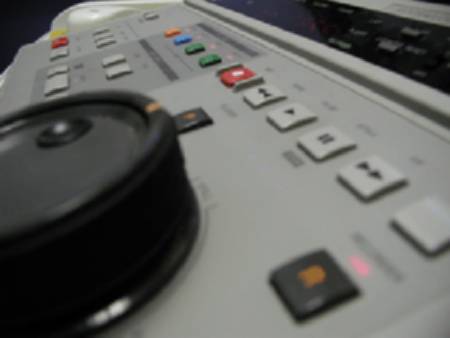FujiFilm
FinePix Real3D Camera review.
FirstLook
PRELIMINARY REPORT
Insiders
Review: FujiFilm
FinePix Real3D camera
Besides stereo 3D stills and full motion video, the camera
can do other unique things.
For example, since it has two lenses, you can shoot at the same time,
a closeup and a long shot.
This is ideal when photographing a sports event, action
photographs, family shots or many other environments.
You can also use the two lens system to photograph one shot
in color and one shot in black and white or perhaps most
interestingly, one shot with a slow shutter speed while the other
shot with a fast shutter speed&ldots;at the same time!
There are many possibilities.
The camera has the ability to photograph still 3d stereo
images using “hyper stereo” or exaggerated stereo.
For example, for you can create greater depth when
photographing distant mountains, or photographing from an airplane.
This was possible in the past using early 3d film cameras,
such as the stereo Realist, but it is much easier to do and the
results are immediate, with the FujiFilm FinePix Real3D camera.
As most stereo 3D
cameras, this camera uses 2 lenses with an inter-ocular distance of
77mm, which is the approximate distance between our two eyes.
With advanced electronics and auto-focus, the lenses very
quickly turn to the correct orientation of the subject, just as human
eyes work, thus the two images snaps together the moment that you
partially depress the shutter button.
Mr. Fujimoto explained to me that the FinePix Real3D camera,
monitor and printed still images actually employs three separate
stereo 3d technologies. For
example, the 8” monitor uses barrier strips, rather than a
lenticular screen in front of the monitor.
The results are excellent.
The individual barrier strips are not visible to the naked eye.
The camera screen is also in stereo 3D and uses a left-right
rapid directed “flicker” system.
Perhaps I should not use the word “flicker” since
there is not any visible flicker.
If you want to make prints from the digital images, uses
lenticular technology, again similar to the Vari-Vue postcards of the
1960’s and 1970’s.
I was told that the prints will cost will cost about $.40
each and at first, the turn around time will be two weeks but may be
quicker the future. You
will be able to upload your stereo images to a special FujiFilm 3d
website, but the prints will of course, have to be sent to you by
regular mail.
The camera feels very solid and well built.
It is built upon a die cast, aluminum chasis, which is rather
rare these days. I can
attest that the camera can survive extreme punishment.
While climbing up Mount Fuji, I slipped and the camera went
sailing, landing about 8 feet from me.
I was sure that it would be severely damaged, and though it
had a minor scrape on the bottom, it functioned just fine.
The camera uses two separate ten megapixel ccd’s and
uses two 3x optical zoom lenses.
It performs very well in low light level conditions.
In fact I was able to shoot many night stereo 3d night scenes
in Tokyo with terrific results.
The camera does a
variety of other functions, most of which I have yet to test,
including wireless transfer from the camera to the monitor and a wide
variety of settings, such as night shots, sunset shots, anti-blur and
so on. Because of
time restrictions, I have not able to test the accompanying software
yet, though from what I understand the software will allow you to
edit the stereo 3d movies, “de interlace” the images to
give a left and right jpg image and various other enhancements.
There were several
things that I would have preferred different, than the way the camera
was designed, but in comparison with the remarkable results, my
complaints are minor. First,
from an aesthetic point of view, I do not like the shiny plastic
look that the camera has. This
look does not reflect the true quality of the camera.
Second is that because of the placement of the two taking
lenses, a certain degree of caution must be taken when using the
camera, since it is possible that one can inadvertently cover or
partially block a lens. Finally,
the various control buttons on the back of the camera are easy to
accidentally press while taking a photograph.
Still, with such a small camera, I am not sure how this can
be resolved, without making the camera larger.
Overall, I would say that anyone using the FujiFilm FinePix
Real3D camera will be very satisfied.
I should mention a
little about my involvement in stereo 3d technology.
Besides being a photo-journalist, I have been have been
involved in stereo 3d photography and television since the 1970’s.
In the late 1970’s and early 1980’s, I had designed
and built a series of 3d-TV systems using two cameras, a broadcast
quality 1” video tape recorder and a broadcast quality monitor
with a course lenticular lens in front.
In order to create the 3D effect without glasses.
To interlace the two images from the tv cameras, I used a special
effects generator and stabilized the image with a Time Base Corrector
or TBC for short. The
results were very good, but the system was very expensive and
enormous in size. At
the time, I envisioned the system used by the medical industry and
for various other industrial applications.
At the time, there was a lot of interest in my system, though
it was not an economic success (www.didik.com/dtv.htm).
In 1986, I purchased the production line and archive of the
Vari-Vue company, which was the company that first popularized
lenticular images, starting in the late 1930’s.
I am also the author of the “History and Guidebook to
Lenticular Technology” (www.Vari-Vue.com).
The photographs below
were shot by the author to provide you with a general overview of the
FujiFilm FinePix Real3D camera.
Copyright
© 1977 - 2009 Frank X. Didik |









